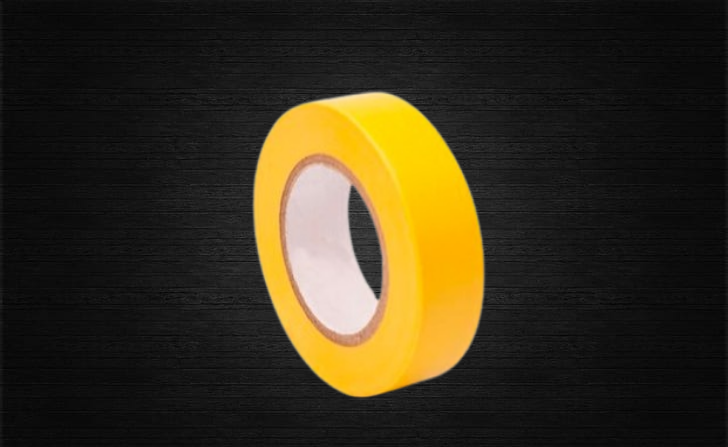But you dont really care about voltage, do ya?
It goes like this, on the the 25th, a minor shock? No, a mortal shift…
The baffled men are meeting now their maker.
Hallelujah, Hallelujah,
Hallelujah, Hallelujah!
Spectaculair give me 14 of them right now
… but you don’t really care for logic do ya?
as someone who has strung a ton of lights the wrong way around on more than one occasion… I can understand the desire for some magic solution that doesnt require undoing and redoing your work…
but fuck, You don’t mess around with electricity.
People also make these stupid suicide cables to plug generators into houses during disasters, often backfeeding power into the lines that may be down and can cause serious injury to workers trying to restore power.
FYI, you can just turn off the main breaker of the residence to prevent backfeeding into the power lines.
If someone can’t make the own cord, what’s the chance they know how vital it is to flip the breaker?
You can, but if forgetting to flip a switch can result in death, then you need a stronger safety control
Someone incompetent enough to forget to shut off the main shouldn’t be operating a generator anyway.
Someone who’s not competent enough to install a proper transfer switch (or at least hire a professional to do it) shouldn’t be operating a generator.
That’s not the point. Normal, sensible people make mistakes because they are tired or stressed or got distracted or just plain unlucky, so things have to be designed so that people can make a mistake and it not instantly create a potentially lethal situation
I don’t think you completely understand what’s being discussed here.
… Except the breaker only interrupts the connection on the “hot” line…
Yeah, there is a reason why proper installations require actual transfer switches or at least a manual interlock to prevent both feeds being connected at the same time. I’m also not sure what would happen if your generator was out of phase with the grid when it reenergised, but I’m sure it wouldn’t be good
If your generator was connected to mains when they came back on it would probably just kill your generator. It is the least robust device in the chain. The next step is blowing up the transformer on the pole which is a spectacular light show. It is also very expensive, and will piss off your entire neighborhood who were just about to get power back and now have to wait for the power company to fix the transformer you blew up by being a dumb ass. Finally it is possible that you would trip out the switch yard which is going to make even more people angry. The biggest risk is you putting power back on the lines that people are working on. That transformer on the pole works both directions. It drops the usual 13.8kV on your local power lines to the 240/120V in your house. It will also turn the 120/240 from your generator into 13.8 on the lines that are being worked on. 13.8 will kill you before you even know you touched it. That is why line workers go through multiple tests before they get near lines they are working on. They will notice there is power on lines that are supposed to be dead. They will find where that power is coming from. They will fine you lots of money. There may be criminal charges.
On the one hand, there are legitimate uses for double ended male cords. On the other, absolutely none of those legit uses invovle christmas lights
Okay but can we agree very very few uses besides generator hookup
generator hookup shouldn’t be one of those, as shouldn’t proper generator transfer switches have plugs designed so you don’t need a suicide cable?
I made one of those once by accident. I was talking a long extension cord that had been cut in two and converting it into two smaller cords. I messed up and attached the male to the wrong cable.
Tell me you’ve never used a generator without saying you’ve never used a generator.
Even with a generator, suicide cord is the WRONG way to do it.
Not like that’ll stop anyone anyways.
Are you actually insane? Never EVER backfeed a socket like that. Way more dangerous than the Christmas light loonies.
Tell me you’ve never heard of an Interconnect and put the lives of every power line worker in your area at risk every time there’s a blackout without telling me…
Tell me you’ve never heard of turning off the main breaker before switching to generator power without saying it.
Interconnects remove an element of human error and putting Lineman at risk
I’ve used a suicide cord before in some rare instances. When I was finished I immediately took it apart.
I used to use one to get power into my popup camper…
Where was the power originally suppose to come in? They make power “Inlets” for that sort of thing. This one is designed with an Interconnect Switch for hooking into a system with Mains, but a camper with outlets should just have a inlet somewhere.
Fuck if I know… I bought the thing used from a buddy like 12 years ago and that was the cord he’d always used … Plugs into a regular outlet on the outside of the camper and then the outlets inside have power.
/me shrugs
You didn’t do it right…
https://www.youtube.com/watch?v=H-4mvK2FW78
Plugging the cord in the same outlet isn’t dangerous itself, but the prongs will be live on the end that’s not plugged in, I’d suggest not touching them. Where it IS dangerous is when people try to use them with a generator to back feed their panel. Don’t do that.
I don’t know much about circuits but could you switch the polarity to make this work?
I know even less probably but I’m going to say yes and let you find out for me.
in AC, which is what home electricity uses, the polarity is constantly switching, from + , then - , then + , and so on, 50 or 60 times a second depending on where you live. This means that, unlike batteries, it’s symmetrical, and you can just splice the cables and attach two male plugs together and they will work regardless, even if you somehow attach the neutral to live and live to neutral, in fact in many countries you can actually buy just the plug without the cable and then you can assemble it yourself in whatever way you please.
of course tho, this should be done only if you have a decent understanding of electricity, and it should not be attempted by someone who lacks those competences, hence why hardware stores “gatekeep” male to male plugs. If you really need one and are sure you understand how they work, you can probably make one yourself.
(If you) are sure you understand how they work
And
If you really need one
I understand how power systems work. But, I can’t come up with a situation where I’d use a male-male AC cord rather than a safer and more reliable alternative. Most relevant is simply cutting off the female termination and reterminating through a breaker to the outlet ($15 and 15 min).
Picture this: It’s 8pm in early December. You’ve been hanging lights on your house since about 10 this morning, and it’s long after dark. As you’re laying the last section, you realize that you’ve got two female connectors next to each other. Do you tear it up and do it again, or do you hack a solution together so you can go inside and thaw?
The suburban solution is to create a false dichotomy to rationalize outsourcing a simple electrical issue to Lowes.
The hack solution is to cut two ends and reterminate them.
I’d hack it. To do it well it’s 8 crimps, wire loom, and harness tape. So, 10 minutes and $5.
and you’d be right. If you are sure about it, and you know how it works, just make it yourself, so that you don’t need to put anyone else in danger of getting sued.
The reason hardware stores don’t sell them is that people WILL use them in a dangerous way, and they don’t want to be held responsible.
Makes sense. I’d not sell a hack job. But, for a temporary thing that’s mine, sure.
Ah I see. You can tell I don’t know much about this lol. I figured it was like DC.
It’s not that it won’t work - polarity doesn’t quite work like that in AC systems - it’s that as soon as you plug in one end, the other end has a pair of exposed metal contacts with mains voltage between them. One mistake, touching the contacts or having them come into something metal (like the ladder you are using to hang the Christmas lights) and someone dies
Also, once you plug it in to your strand of lights, the other end of your lights will have a live male plug dangling off it.
Reversing polarity is a Starfleet-approved procedure in all situations.
I’m struggling to imagine what the use case would even be.
Christmas lights.
Strings of them have a plug on one side and a receptacle on the other. When hanging the lights, people don’t notice if they have someone backwards and end up with a receptacle facing a receptacle. Rather than do the smart thing and turn the lights around, they go to the hardware store for assistance in killing themselves.
Another common one is backup generators.
Someone will turn off the breaker in the service panel, then plug a suicide cord from any receptacle in the circuit, to the output of a portable generator.
I’m sure there’s more.
So if these are people wiring their Christmas lights wrong, assuming these are led lights, doesn’t this “solution” not work bc of the polarity anyway? Or is that only a DC thing with diodes? I only did okay in my physics electricity stuff lol
It would still work. But it is VERY dangerous. 1. The far end of the light string will now have exposed metal prongs that are energized at 120v, which can be fatal. 2. If the other end gets plugged into a socket, there is a 50% chance it will be a different circuit on a different phase, which can create a 240v direct short, across a wire that has no properly sized circuit breaker. 3. Using it to plug a generator into your house during a power outage can kill electrical workers trying to fix the outage if you fail to open your circuit breakers.
I knew that much, I was more interested in how diodes work on AC lol
In AC, diodes work half the time, every 1/60 second. The “good” LEDs will have circuitry to fully rectify the AC into DC, drop the voltage properly, and smooth the peaks and valleys, so they will be continuously lit. So the cheap LED Christmas lights might have a slight flicker, and the good ones are steady. (Or get fancy with chasing colors, etc.)
All of that happens inside each of the “bulb” enclosures, or sometimes in a box at one end, so it technically doesn’t matter which end they are getting electricity from, since the socket at the far end is still just connected in parallel to the plug at the near end. (Otherwise you wouldn’t be able to link them together.)
It’s just a really bad dangerous idea to reverse them.
For simple stuff such as those lights, polarity is usually not a problem when using AC.
In case of AC (Alternating Current), instead of having a + and - pole, you have a Line and a Neutral terminal.
The Line terminal goes + … - … + … - … + … - with time and the Neutral stays at 0.
When connecting to LEDs and such, you have an AC to DC converter, which tends to be fine no matter which pin you put in which hole.
Ah, so that’s why it’s half power compared to DC, makes sense.
Unless the AC is a square wave, in which case stuff becomes different.
-
Not really.
-
Where on earth would Mains be a square wave?
Low quality UPS Inverter
That’s not what Mains means.
As far as the appliance cares, it is the only input power it gets at that time.
-
Kinda, it’s half the power because the power goes like the temporal average of the current squared, the current oscillates like sine or cosine, and the temporal average of a sine or cosine squared is 1/2.
In household wiring polarity does matter, especially if you are assembling plugs. Only one of the three wires is carrying live current (hot), the other two are the neutral return path, and ground which is for safety. If you accidentally switch polarity, you can cross hot to neutral and cause a short circuit.
My bad. I wasn’t clear enough.
I was talking about 2 pin plugs, as shown in the post and how it is usually for those cheap lighting thingies.
Switching the neutral and hot pins doesn’t matter except for appliances with exposed metal tied to the neutral pin, which is pretty much exclusive Edison screw lamps. This is why many plugs (especially those that immediately go to a rectifier) don’t bother with polarization.
Swtching hot and ground is a problem
No, alternating current doesn’t have a polarity like DC does.
Let me introduce you to the FULL BRIDGE RECTIFIER!
Practical IQ test with binary result (“pass”/“fail”).
My dumbass made one by accident. Plugged it in, walked to the other end, picked it up my saw, “Shit. How did I throw the wrong end out here?” Whatever, we’ve all strung the extension cord backwards before. Here come the IQ test.
Walked to the other end of the cord, yanked it and threw that end back out into yard, plugged it in. Went back to my saw, “Oh for fuck’s sake!”
bruh moment
We intentionally made suicide cords all the time at my old job lol
/But hardware stores don’t want to sell it tooooo youuu…/
/…tooo ya…/














